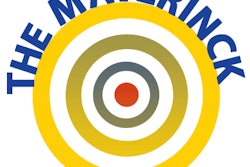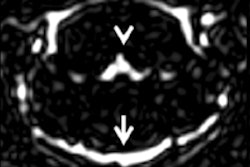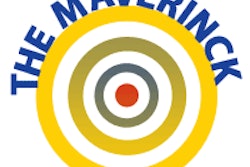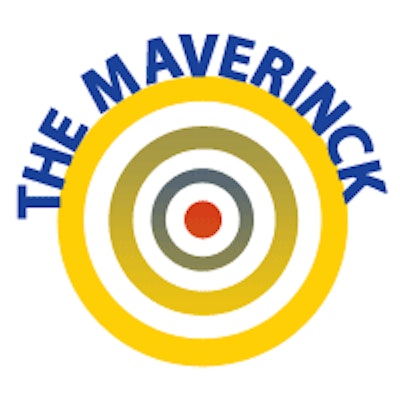
My detailed article about gadolinium-based contrast agents had quite a response.1 It made the news in the U.S., and I got several requests for interviews. I don't give interviews. One never knows what the final printed form will look like. Silence is golden.
In Germany, there was a reaction from an unexpected corner. I don't know if it was my article or the general uproar about contrast agents that made the German Society of Nuclear Medicine move. Although they are not involved in MRI, they jumped on the bandwagon and released a comment to the press in early February.2 The first paragraph reads as follows:
MRI contrast agents may remain in the brain. Nuclear medicine physicians recommend alternative tests for the heart. The metal gadolinium, a component of contrast agents for imaging diagnostics by magnetic resonance, can accumulate in the brain after the examination. So far it is unclear whether the deposits cause health problems. However, the Professional Association of German Specialists for Nuclear Medicine (BDN) recommends employing contrast agents at present only for unavoidable investigations. According to the association, heart studies can also be performed by myocardial scintigraphy or ultrasound.
The rest of the press release refers to the latest announcements of the U.S. Food and Drug Administration (FDA) concerning gadolinium agents and describes in detail radioisotope imaging of the heart.
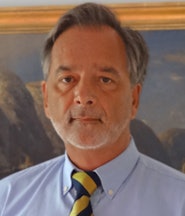 Dr. Peter Rinck, PhD, is a professor of diagnostic imaging and the president of the Council of the Round Table Foundation (TRTF) and European Magnetic Resonance Forum (EMRF).
Dr. Peter Rinck, PhD, is a professor of diagnostic imaging and the president of the Council of the Round Table Foundation (TRTF) and European Magnetic Resonance Forum (EMRF).Gadolinium is described as highly toxic -- however, this is an argument like "electricity is deadly"; it always depends on how it's applied. Both technetium and thallium, the main myocardial scintigraphy agents, deliver ionizing radiation to patients -- unlike gadolinium -- but this was ignored. The turf war between nuclear medicine and radiology has returned with official backing and is up to new heights. A lot of money is at stake.
The Deutsche Roentgen Gesellschaft (German Radiological Society, DRG) reacted slowly on the latest developments, playing their cards close to their chests.3 They didn't want to hurt anybody, neither the German radiologists, nor the manufacturers. Not even their patients. Unfortunately, they missed the boat because their brothers in nuclear medicine were faster: They smelled new business.
Radiologists in Germany have had that business for more than 20 years. Germany has about 2,500 MR systems, even though 1,500 would be more than enough for the population of the country. The greater Berlin area is said to have the world's highest number of MR studies: Statistically, 11% of the population get one scan per year, nearly half of them with contrast enhancement. Even stubborn financial achievers among the MR entrepreneurs (including not only radiologists) admit that a high percentage of examinations and contrast injections is of no clinical significance. Nuclear physicians know that too.
However, the main point here concerns the outcome of the press release of the BDN.
Hildegard Kaulen, a science correspondent from the Frankfurter Allgemeine Zeitung (FAZ), considered a serious and reliable daily in Germany, and Anna Kröning, writing for Die Welt, a slightly yellower paper, took that release and reeled off two articles.4,5 Neither grammar nor facts are emphasized, and the statements of the president of the BDN, Dr. Detlef Moka, are stretched around two corners. Admittedly, Moka's generalizing remarks about gadolinium contrast agents were off the scientific grounds and quite daring; but the processed articles in the two dailies mixed facts and opinion in a simplistic way and made sweeping judgments: bad news is good news.
Even worse, Kaulen "tarted up" and republished her article a month after the printed version as an e-version.6 The first paragraph reads like this:
Magnetic resonance therapy contrast agents dangerous for the brain? -- The contrast agent gadolinium used in magnetic resonance therapy (MRT) was believed to be harmless although it is toxic. There is now protest against its frequent use.
MRI's acronym in German is MRT: magnetic resonance tomography, but that definitely doesn't mean "MR therapy." It's not used for treatment, but rather it's a diagnostic tool.
Kaulen describes gadolinium as a "contrast agent" -- it's not -- it's an element; she also postulates that gadolinium is taken up and stored in the kidneys. Again, that's her invention. Writing science articles for a newspaper is a difficult task; making the text simple to understand without being wrong requires talent and a lot of practice ... as well as having sufficient time to research and polish an article. Usually journalists are under time pressure. This might be an excuse for the rather garbled accounts.
Nobody mentions there are several groups of gadolinium-based contrast agents, cyclic and linear, as well as those excreted by the kidneys only and those excreted by both kidneys and liver. There are safe and unsafe contrast agents -- not just a single, defective, and wrongly applied compound called "gadolinium."
Inaccuracies -- by mistake, by ignorance, or for personal or political reasons -- are human. For years, I read in both papers mentioned here statements like Calais being a Central European city and Budapest being a place in Eastern Europe. Geography is not a strength of some journalists. History is a rather "rubbery" subject too.
Not only on the editorial pages are facts often fiction, and opinions offered as facts, but also on the front pages. Somewhere one has to draw conclusions from contorted and misconstrued articles and finally to draw a line.
During the last decades I have learned that I cannot trust material I read in Nature or, in the case of medical imaging, Radiology, or any other "high class" science or medicine journals; that one cannot believe dailies and news magazines, and that Wikipedia articles are deeply suspect and not citable. Still, I had some respect for the science section of certain newspapers and scientific magazines. FAZ had a famous science editor, Rainer Flöhl. He could compete with U.K. and U.S. science editors. He died recently. When he retired some years ago, it was the end of an epoch in German journalism.
A tip for science journalists: Always use two independent sources to check the facts; don't rehash press releases on which you lack the background, and don't add random, unconnected information. It shouldn't be "all the free press releases we get we'll print."
A tip for those writing press releases: Think twice before you make oafish statements. Remember: Silence is golden.
However, the damage is done. Meanwhile patients get uneasy and scared ("I had four MRIs -- am I gadolinium toxic now?"). Even if you know that some journalists are irresponsible and completely unreliable, the doubt, the fear remains. Spreading fear is intentional -- it attracts readers. Yet, the formerly good reputation of a "quality" newspaper has suffered severely.
By the way, MR contrast agents applied according to the recommendations are still safer than x-ray contrast agents and radioisotope tracers -- not vice versa.
Dr. Peter Rinck, PhD, is a professor of diagnostic imaging and the president of the Council of the Round Table Foundation (TRTF) and European Magnetic Resonance Forum (EMRF).
References
- Rinck PA. Maverinck -- Gadolinium: Will anybody learn from the debacle? AuntMinnieEurope.com http://www.auntminnieeurope.com/index.aspx?sec=sup&sub=mri&pag=dis&ItemID=612323 9 December 2015. Accessed 21 March 2016.
- BDN -- Berufsverband deutscher Nuklearmediziner. MRT-Kontrastmittel kann im Gehirn zurückbleiben; Nuklearmediziner empfehlen alternative Untersuchungen fürs Herz. Berlin. http://www.bdn-online.de. 5 February 2016. Accessed 21 March 2016.
- Vorwerk D. Gadoliniumhaltige Kontrastmittel in der Magnetresonanztomographie. DRG -- Deutsche Röntgengesellschaft. www.drg.de/de-DE/2687/gadoliniumhaltige-kontrastmittel-in-der-magnetresonanztomographie. 15 February 2016. Accessed 21 March 2016.
- Kaulen H. Kontrastmittel für das Hirn gefährlich? Frankfurter Allgemeine Zeitung. 17 February 2016:N1.
- Kröning A. Beim MRT lagert sich Metall im Gehirn ab. Die Welt. www.welt.de/gesundheit/article151982872/Beim-MRT-lagert-sich-Metall-im-Gehirn-ab.html. 8 February 2016. Accessed 21 March 2016.
- Kaulen H. Kontrastmittel für das Hirn gefährlich? Frankfurter Allgemeine Zeitung | FAZ NET. www.faz.net/aktuell/wissen/medizin-ernaehrung/konstrastmittel-gadolinium-gefahr-fuer-das-gehirn-14072279.html. 18 March 2016. Accessed 21 March 2016.
The comments and observations expressed herein do not necessarily reflect the opinions of AuntMinnieEurope.com, nor should they be construed as an endorsement or admonishment of any particular vendor, analyst, industry consultant, or consulting group.





